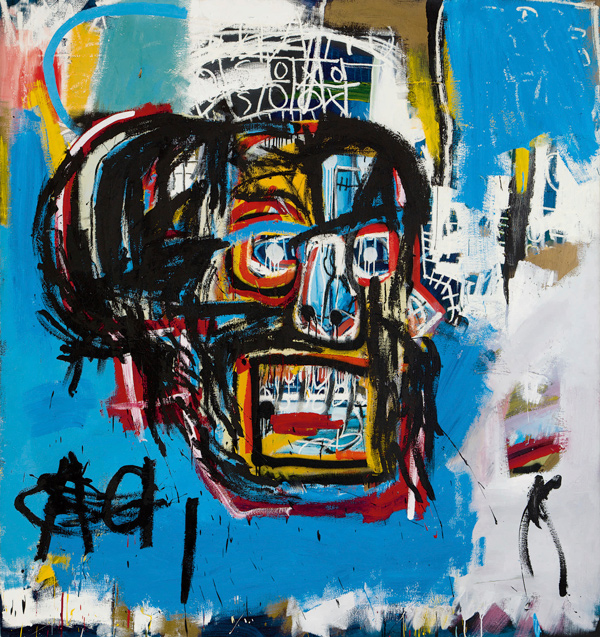Jean-Michel Basquiat’s 1982 Untitled painting of a skull looks like a prison that can barely contain all the rage, anger and fierce memories that drive a person. Painted in graffiti style, it is young and barely controlled. You wonder how it is ever going to get through life and then you wonder what could ever turn it into the mournful helpless bone-white thing we are accustomed to seeing when death finally takes it.
Now it just sold for $110.5 million. What does this mean? That there is a million-dollar difference between seeing a work of art and owning it—possessing it? As I write this, all I have to do if I want to see it is close my eyes. Frankly, I would rather do this experiment with Picasso’s Guernica; it is more beautiful and, at the same time, more terrifying. I wonder how much it would cost? But that doesn’t matter, does it?
Money is involved on a different scale than the most beautiful, or meaningful things, or what the inside of your head does every time it is confronted with an image that you are deeply moved by. It can be a painting or a memory, a tree or a child that causes you to feel. Art is made by man. When money is involved the object has to be made by man. The actual sunset, the moon in the night sky, or a human skull—well that price is astronomical and therefore it is free.
Things made by man cost money to show their value, just in case we forget—we are such a forgetful pack of mutants. It also shows the power of the collector, just in case we forget this too, because we are such a mindless bunch of lemmings. But then there is another wrinkle—whatever costs the most money is the best, and if you don’t think so you could lose your membership to the human race. This can be very disruptive. Only the rich get to say what is good?
Now we don’t decide whether we like it or not—we are being told. And suddenly we are staring at something we really don’t like, while munching on a piece of cheese, and swallowing more champagne than necessary just to prove we are so interested in someone else’s idea of art because we don’t really give a fuck, we just want to see that much money move from point A to point B because that’s what really gets us off.
Is a graffiti skull more beautiful than a Georgia O’Keeffe skull? Neither of which are nearly as impressive as the skull you still remember from that horror movie, where your Nana had to drag you out, kicking and screaming in terror. Boy, was that mind-blowing or what?
Wake me up when a painting costs as much as a sunset, or when a sunset impresses us as much as a painting. I’ll be on the couch dreaming of something I never saw before—but something I recognized… from the past or the future. Or something that had been right here beside me all the time. And that is priceless.


